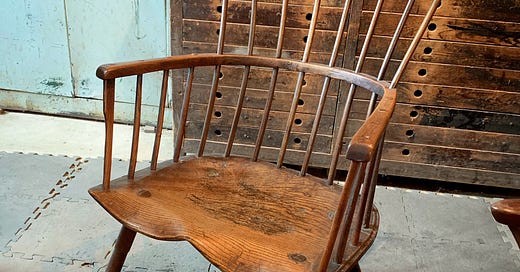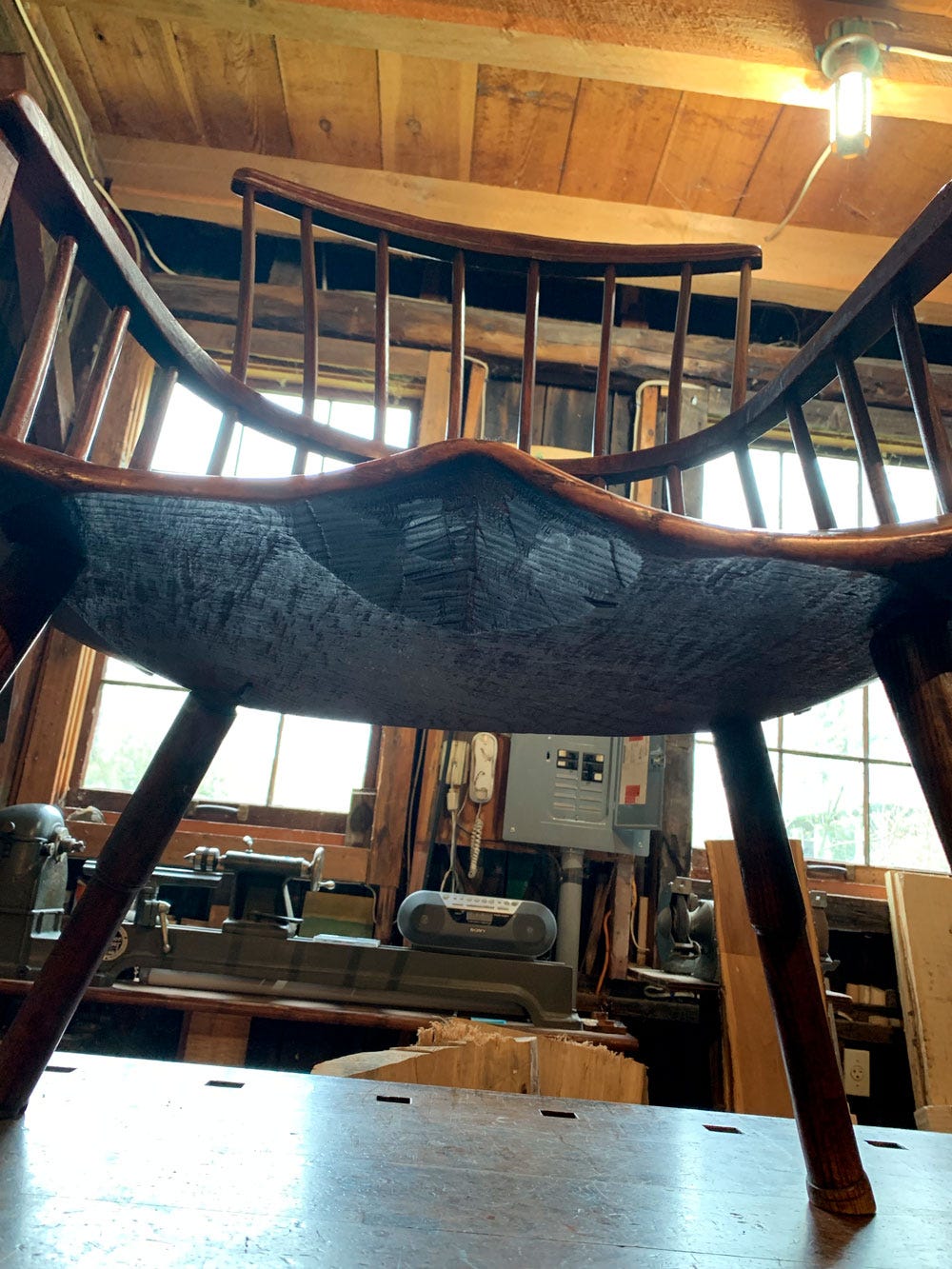When I met chairmaker John Porritt in 2019, I stopped by his shop in Upstate New York where he had arranged a handful of chairs for us to talk about. Some of them he had built and some of them he had collected through the years.
They were all interesting stick chairs, of course, except for one odd duck in the corner.
I stared at it for a good five minutes. I had never seen anything like it, not in photos or in museum collections. I couldn’t tell if it was really old (18th century) or not. My brain just kind of froze up.
I wouldn’t call it a hard-on Windsor chair, though it had some of those qualities. I sure wouldn’t call it a folk chair; it was made too well. And it was just so… unusual.
The seat was massively thick, but it had been thinned at the edges so it looked as light as a potato chip. The area under the pommel had been chopped out as well, which is a detail I had never seen.
The strut legs were simple turned cylinders with dramatic rake and splay. Above the seat was a bent arm with the simplest hand shape I’d seen on a fancy chair. The sticks were thin and splayed out. And the comb was sort of a triangular shape I’d never encountered.
The chair was both massive and light. And, to be honest, intoxicating.
While examining the chair, I got the same weird feeling in my loins that I get when holding 18th-century tools that have been well-preserved. They have a handmade perfection/imperfection that is rare today.
John has since sold the chair, which is probably for the best for his sanity because I’d be bugging him about it almost every day. That’s because since my 2019 visit, this chair has been smoldering in the back of my mind and refuses to leave.
I am not alone.
A group of researchers belonging to the Regional Furniture Society1 have been investigating these chairs and sharing what they know in print and on YouTube. A very nice introduction to this chair form is here. Julian Parker traces what is known about these chairs through inventories, advertisements, paintings and the furniture record. I watched it four times. The chair is associated strongly with Lincolnshire, and the current date for the chair is circa 1725-1740.
Rob Ley built a reproduction (or two) with assistance from William Sergeant of the Lincolnshire Chair Museum and the Regional Furniture Society. His video series shows the antique chair from many angles. There are lots of details. Lots of close-ups.
I think you know where this might be going.
Keep reading with a 7-day free trial
Subscribe to The American Peasant to keep reading this post and get 7 days of free access to the full post archives.






